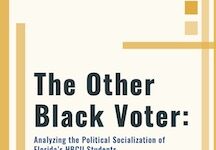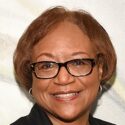 The latest report on the status of women and racial and ethnic minorities in leadership positions at the 130 educational institutions in the Football Bowl Subdivision of the NCCA has been released by The Institute for Diversity and Ethics in Sport (TIDES) at the University of Central Florida. These are generally the schools with the nation’s largest athletic programs.
The latest report on the status of women and racial and ethnic minorities in leadership positions at the 130 educational institutions in the Football Bowl Subdivision of the NCCA has been released by The Institute for Diversity and Ethics in Sport (TIDES) at the University of Central Florida. These are generally the schools with the nation’s largest athletic programs.
The scorecard gave a grade of B- for racial diversity in leadership positions at these schools with large college sports programs. The grading was up one tenth of one percent to 79.6 percent
Last year’s report noted that there were 23 people of color holding positions of president or chancellor at the 130 colleges and universities, the highest number of presidents or chancellors of color since the Leadership Report Card’s first release in 2007. This year the total dropped to 22. Nine of the 22 campus leaders were Black.
Athletic directors of color increased by 1.6 percent, rising from 16.9 percent in 2020 to 18.5 percent in 2021. There were 15 Black athletic directors at the 130 educational institutions.
Faculty athletic representative positions saw an overall increase in racial hiring from 18.0 percent in 2020 to 18.5 percent. There were 18 African Americans among the 135 faculty athletic representatives at these schools. (Some schools have more than one faculty athletic representative.)
Football head coaches of color increased by two from 21 in 2020 to 23 in 2021. Black or African-American head coaches remained at 13, or 10 percent of the total. In contrast, the percentage of Black or African-American football student-athletes increased to 48.7 percent for the 2021 season.
“Overall, White people held 324 of the 395 campus leadership positions reported in this study, which was the same from last year,” said Richard Lapchick, founder and director of the Institute for Diversity and Ethics In Sport. “The people tasked with leadership positions should represent those who they lead. Unfortunately, in college sports, specifically at the FBS institutions, the overrepresentation of White men has strongly influenced the lack of opportunities for women and people of color. While women and people of color serving in leadership positions at FBS institutions is improving, it should be noted that the numbers are not a reflection of the student-athlete body. To provide the best experience and services for student-athletes, individuals in leadership positions need to be able to relate to the student-athlete body. I challenge the leadership at all colleges and universities to mirror the diversity of their students and student-athletes in a way that is more equitable for all leadership positions.”











